10 ways : How To Manage AI Projects Effectively

Establish a Clear Goal
For those looking to harness the potential of AI, projects can be challenging and complex. To ensure success, it’s essential to have a clear goal and a plan for achieving that goal. Here are some helpful guidelines to manage AI projects effectively:
- Establish a Clear Goal: Before launching an AI project, decide on the specific objectives and ambitions you wish to achieve with your team – this will help you define the timeline for success. Take time to think about what kind of outcomes you are hoping for and create well defined milestones for measuring progress.
- Define Timeline: Clearly outline how long a project will take to complete and assign team members accordingly. Make sure you factor in any delays or extra steps that may arise during development – this will help keep things on track in the long run.
- Assign Team Members: Every successful project requires a mix of skill sets and experience – so make sure you assign team members accordingly based on their expertise level. Also take into account any budget limitations which could limit who’s available as resources (and if necessary, look into ways of outsourcing certain tasks). Data Science Course
- Resource Allocation: Resources come in all shapes and sizes, from time to money –so make sure you plan out exactly what is needed for each stage of the project. This will help ensure there are no surprises along the way that could delay progress or cause costly overruns.
5.Document Objectives: Documentation clearly defined objectives will help keep everyone focused and motivated throughout the course of the project–particularly when it comes to deadlines and next steps for every team member involved in the process (which includes executives, developers, etc.
Define Your AI Project Parameters
Here are 10 ways to define your AI project parameters and manage resources effectively:
- Identify Your AI Project: Define the scope of your project by understanding your goals and objectives for implementing AI technology. Developing a clear plan and timeline for the AI project will help set expectations from the start and make sure everyone is on the same page.
- Know Your Parameters: Establish parameters that will guide your project and ensure it stays on track. Clearly define what data needs to be collected and analyzed, what tools you’ll need to access, how the budget will be allocated, as well as expected timelines for completion.
- Utilize Data & Tools: Utilize data sets that are valuable in developing an AI model that works for you, as well as finding effective tools for data analysis and manipulation available in the market or online sources. This will help ensure success when it comes time to implement the technology.
- Set Realistic Goals & Objectives: Be realistic about what you hope to achieve with a successful AI project implementation. Set attainable goals that are measurable and can be tracked over time so progress can be monitored and assessed accordingly.
- Establish Expectations: It’s essential that all stakeholders involved in the AI project have realistic expectations of what it takes to bring a successful implementation to life — strategizing, testing, debugging issues — this takes both time and resources.
Gather a Team of Experts
Here are 10 ways to gather a team of experts that can help you manage an AI project effectively.
- Identifying Experts: Research the field of AI and identify thought leaders and professionals who specialize in the area you are trying to work with. Look at their professional qualifications, experience in the field, and any relevant publications or talks they have given that showcase their expertise.
- Qualifications/Skills: Look for experts who possess both hard skills such as coding ability or sophisticated mathematics, as well as soft skills like communication, problem solving, and creativity. This will ensure that your team has the right mix of skills needed to work through any potential challenges.
- Experience Needed: Depending on the complexity and scope of your project, look for experts with different levels of experience from entry level to senior roles so that everyone on your team can contribute effectively no matter their roles or expertise levels. Data Science Course in Delhi
- Team Size: Make sure that you have enough people working on your project so that it is properly resourced but not too large so it becomes unmanageable; 46 people is a good rule of thumb depending on the size of your project.
Utilize Appropriate Development Tools
Here are 10 ways to help you better manage your AI projects:
- Selecting the right tools: Selecting the right tools for your AI project is crucial. When choosing the right tools for your project, consider factors such as cost, complexity, scalability, and compatibility with other tools and platforms. Evaluate options carefully before making a final decision.
- Project tracking: Utilize project tracking software to monitor tasks, keep track of budgets, and spot potential issues early on in development. Make sure everyone on the team is familiar with how the software works and able so they can quickly make updates as needed.
- Automation process: Automation processes can help speed up projects by reducing manual labor requirements. Automating certain tasks like data extraction or feature engineering can help streamline development and improve efficiency.
- Collaboration: It’s important for team members to collaborate effectively throughout the project lifecycle as this helps foster innovative ideas and quicker solutions when problems arise during development. Use collaboration tools such as Slack or Google Hangouts to facilitate efficient communication between team members and stay organized during the development process.
- Documentation: Documenting progress throughout the project will help ensure accuracy over time and prevent costly mistakes due to assumptions being made by team members at different stages of development (e.g., wrong assumptions about coding). Using documents such as Gantt charts or flow diagrams can also be helpful visual aids in staying organized while developing your AI system.
Understand the Data Requirements
- Data Collection: The first step in an AI project is gathering all necessary data. This includes identifying stakeholders, collecting relevant information from them, and documenting their process and results. It’s important to have a clear plan for collecting the right type of data in order to meet the goals of the project.
- Data Analysis: Once you’ve collected all your data, it’s time to analyze it. Start by developing a hypothesis and then testing it against your existing data set. This can be done through a variety of methods such as predictive analytics or statistical analysis depending on your needs.
- Requirements Gathering: In addition to collecting and analyzing data, you need to understand what requirements are necessary for success of your AI project. These may include features such as scalability, resource optimization or other performance enhancements needed to get the best results possible out of your project. Data Analyst Course in Delhi
- Identifying Stakeholders: Understanding who are all involved in an AI project should be done ahead of time. Having a clear understanding up front who stakeholders are and their role in a project can save both time and money down the line when changes or requests come up unexpectedly later on down the road during development or deployment phases respectively.
Create an Iterative Process Model
- Develop Your Model Requirements: Before starting the design and development phase, it’s important to first define what the model should do. Identify input/output requirements, data types and sources, validation criteria, as well as any other specific requirements for the model outputs.
- Design & Development Phases: Once you’ve identified your model’s requirements, break down your design and development process into separate phases. This will help you organize concurrent tasks and identify any potential areas of improvement that need exploration or testing later on.
- Test Plan & Evaluation: After designing and developing your model, create a test plan in order to evaluate its performance. Testing should include benchmarking against models with similar applications to determine accuracy and precision levels, as well as ensuring that input data is handled correctly by the model.
- Deployment Strategies: Once the model has been tested successfully and meets all its specified requirements, it’s important to decide how it will be deployed in production environments. This could include containerization strategies such as Kubernetes or other architectures like Cloud Functions or APIs which facilitate the scalability of a given AI system.
- Maintenance Procedures: Over time, new data sets may impact an existing AI system and require modifications or upgrades in order to remain effective in production use cases. Developing a maintenance procedure.
Prioritize Security and Compliance Issues
To help your AI projects run smoothly and confidently, consider implementing the following key components:
- Risk Assessment: Identifying potential risks and threats should be an essential part of any AI project management. Conducting regular risk assessments helps you understand potential vulnerabilities so that you can proactively protect against them.
- Threat Detection: Utilizing threat detection techniques such as automated scanning and profiled based alerting helps your team track anomalies that could lead to breaches and prevent them from occurring in the first place.
- Cybersecurity Practices: Developing robust cybersecurity practices is critical for any AI project. Installing firewalls, limiting user access to sensitive information, creating strong passwords all of these measures can help protect against malicious actors who would exploit technology for their own ends.
- Data Protection Tools/Processes: Making sure that all data used in an AI project is protected through encryption and other privacy tools is paramount to its success; how else will you know the data isn’t being improperly accessed? Implementing data protection tools/processes also ensures that customers’ personal information remains secure, essential for businesses operating with GDPR or HIPAAcompliance standards.
Regularly Monitor Results and Identify Improvements
- Regularly Monitor Results: On a regular basis, review the results of your AI project against established benchmarks. This will help you identify any potential issues early enough to take corrective action and make sure that the project meets its objectives.
- Analyze Results: Take some time to analyze the data from your AI project to look for any trends or patterns in performance. By understanding which aspects of the project are effective and which need improvement, you can better assess what interventions may be required in order for it to be successful.
- Identify Opportunities for Improvement: Once you have analyzed the results from your project, look for areas where improvements can be made – whether that’s adding additional features, tweaking existing ones or addressing any underlying issues that are holding back progress.
- Implement Improvements: Put in place a plan to implement any identified improvements as quickly as possible, so that you can start seeing results right away.
- Test Effectiveness: After making changes to your AI projects, test their effectiveness to measure their impact on the overall performance of the initiative. This will help inform further decisions regarding how best to proceed.
- Establish a Continuous Improvement Cycle: Put in place a continuous improvement cycle within your team so that all changes are monitored and assessed regularly and improvements can be implemented quickly if necessary. Data Science Institute In Delhi
Integrate With Existing Technologies
- Integrate Existing Technologies: Start by integrating existing technologies with AI tools and systems. This will help you quickly get up to speed on managing tasks and progress in an efficient manner. This integration allows you to use the data from your existing systems to inform your AI decisions and take the appropriate action accordingly.
- Use AI Project Management: Utilize AI project management tools to track progress and monitor deliverables in real time. With these tools, you can identify potential issues in your project well before they become roadblocks, giving you plenty of time to adjust course as needed before it’s too late.
- Leverage Benefits: Take advantage of the benefits that come with using AI technology, such as automating mundane tasks or providing additional resources at no extra cost. This can save both time and money while still maintaining the quality of production output needed to keep ahead of competitors.
- Identify Challenges: Understand any challenges associated with integrating AI into existing systems so that you can work them out prior to beginning a project or deploying a new system. Anticipate potential threats or errors that could arise during implementation so that you can plan for them beforehand.
Plan Ahead To Ensure A Smooth Implementation Process For Artificial Intelligence Projects
Here are 10 ways on how to manage AI projects effectively:
- Research – Before starting your AI project, it’s important to conduct thorough research into the industry and the current trends in order to determine what technology will best meet your needs. Researching the capabilities of different AI tools will also help you select the one that is best suited for your project.
- AI Tools – Once you’ve determined the scope of your project, it’s time to select the right AI tool for the job. There are various types of AI tools available today such as machine learning, natural language processing, and computer vision that can be used depending on your needs. Selecting an appropriate tool is essential for ensuring a successful outcome.
- Goals/Outcomes – Establish clear objectives and goals before beginning your project so you know what outcomes you’re aiming for from the start. Outline these goals in detail and make sure everyone involved understands their purpose and importance so everyone stays focused throughout the process.
- Deliverables – Define all project deliverables upfront so there is no confusion or miscommunication about what is expected at each stage of the implementation process and when it should be delivered by. Having well defined deliverables will help keep everybody accountable for meeting deadlines and adhering to quality standards.

ai projects
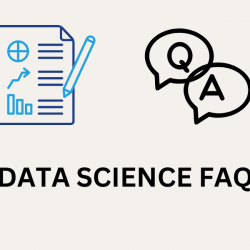
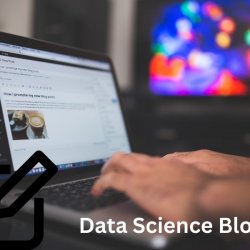
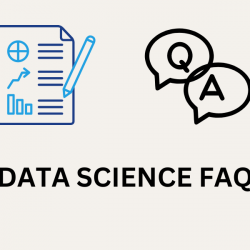

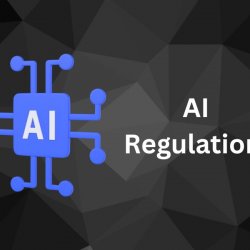
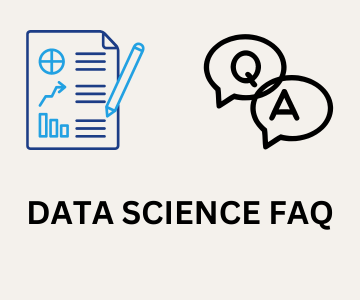
Ingen kommentarer endnu